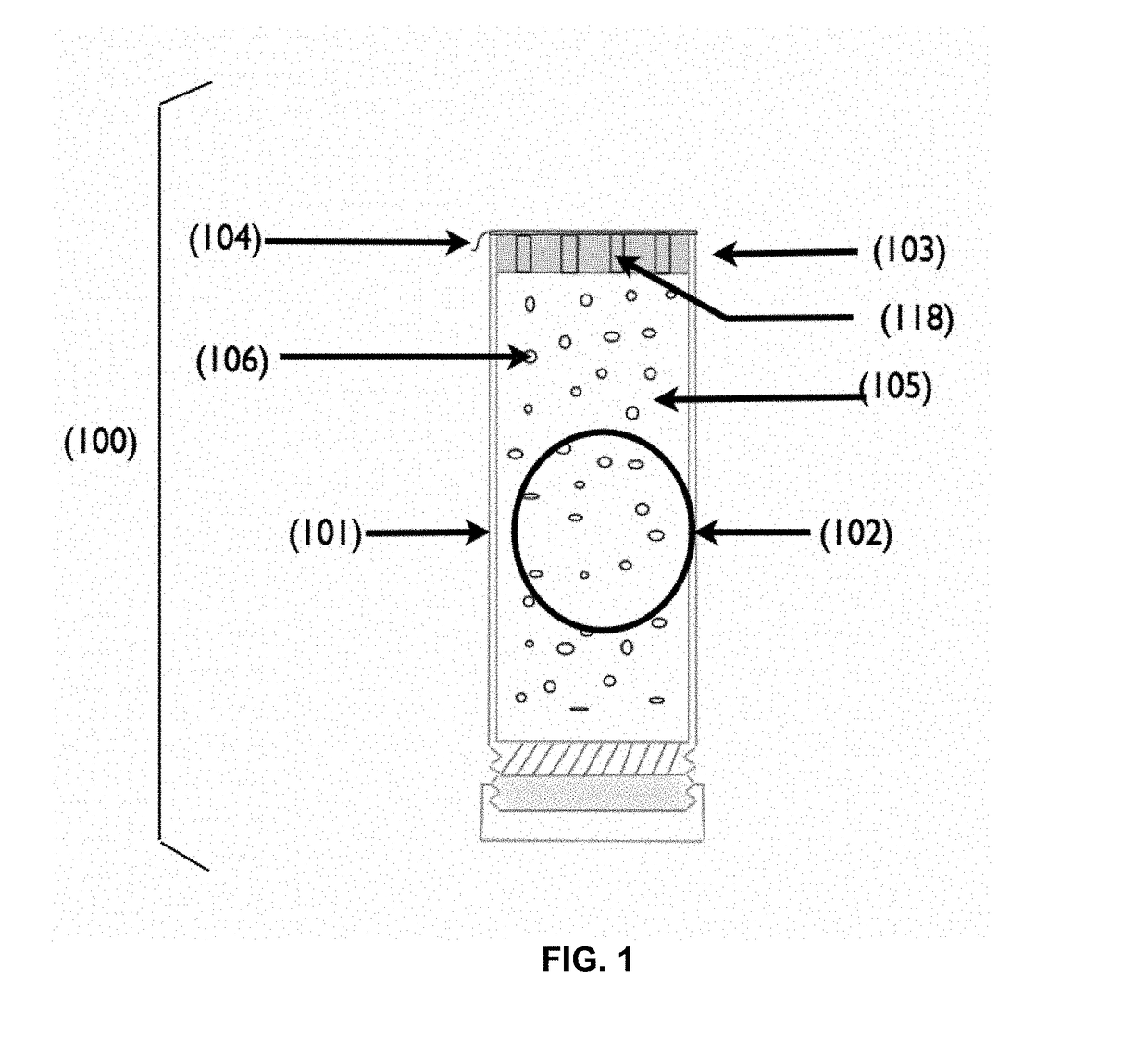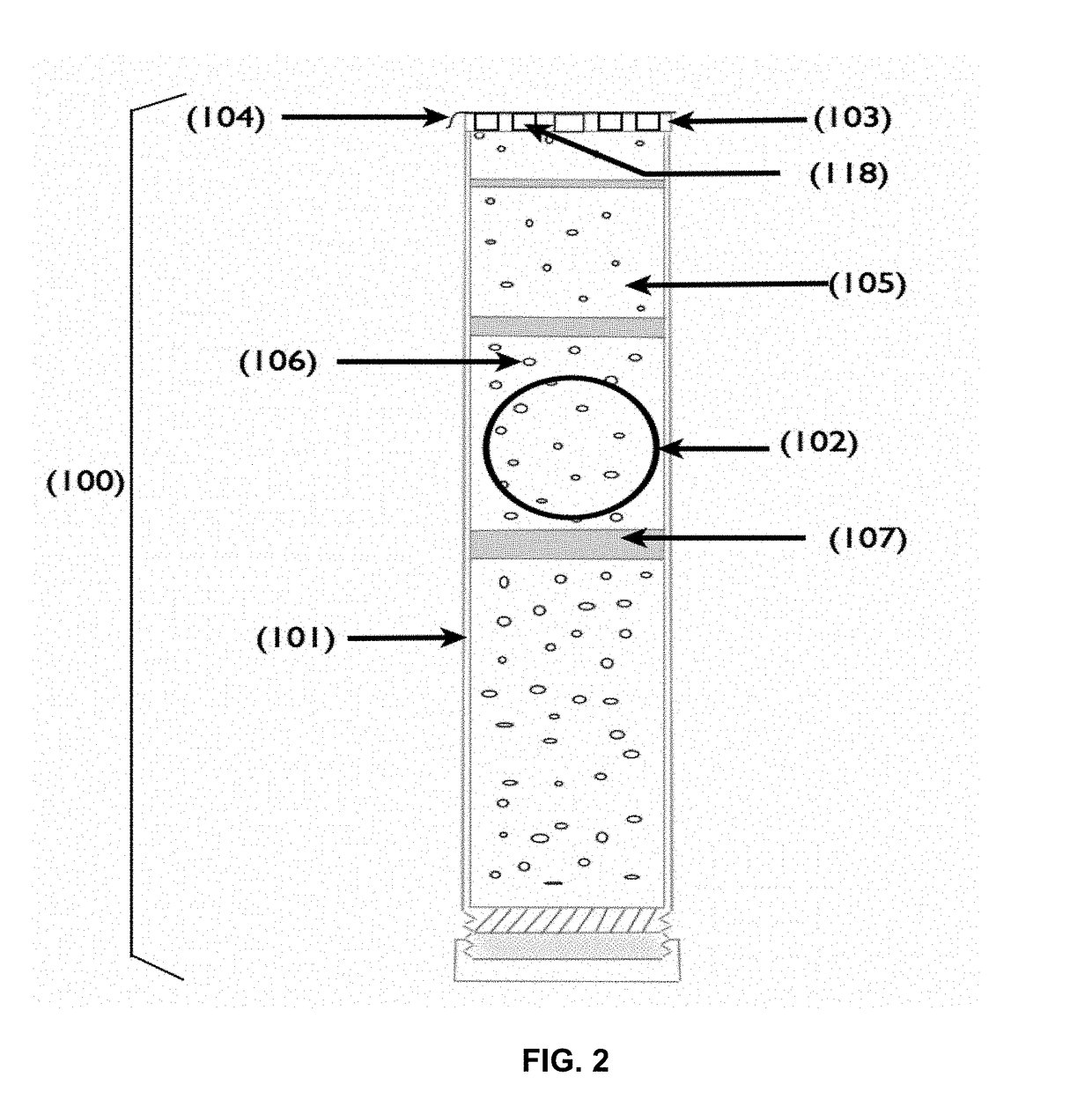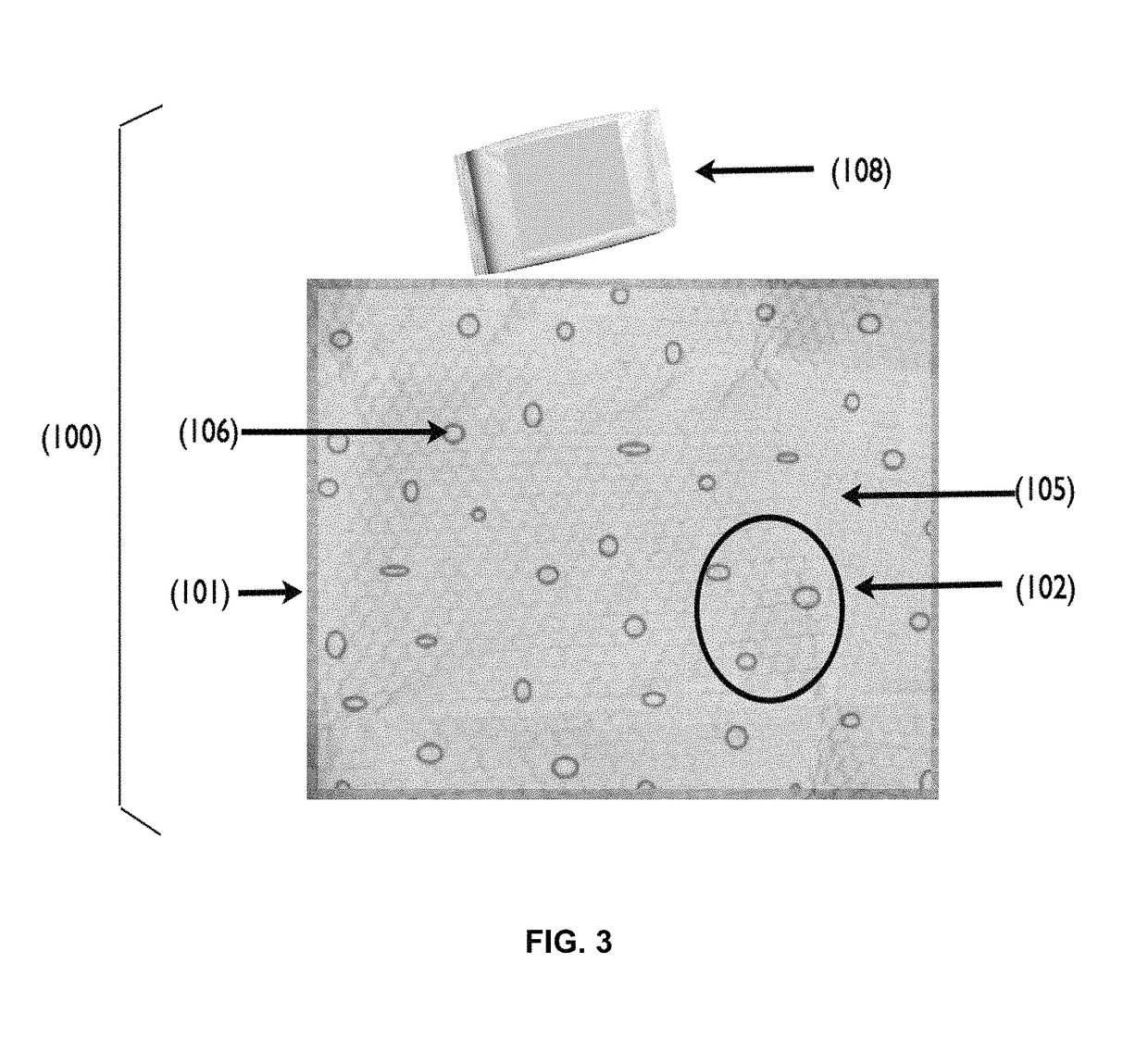Apparatus and method for controlled release of botanical fumigant pesticides
a technology of pesticides and botanical fumigants, applied in the directions of biocide, plant/algae/fungi/lichens, biocide, etc., can solve the problems of human health, animal and environment harm, carcinogenic and harmful residues in food, soil, ground water and environment, and use of certain synthetic harmful pesticides
- Summary
- Abstract
- Description
- Claims
- Application Information
AI Technical Summary
Benefits of technology
Problems solved by technology
Method used
Image
Examples
example 1
[0086]As explained above, it was demonstrated that there exists an active inhibition among secondary metabolite components in the fumigant pesticide composition prototype. A novel bioassay method was developed to pin-point exact concentrations of individual secondary metabolites of the fumigant composition at any given time and location inside confined spaces. The interactions among individual secondary metabolites was scrutinized and their ability to inhibit each other as a solution was used to block volatilization of undesired constituents of active ingredients in the fumigant pesticide composition that do not play a role in its toxic effect against target pests. The volatilization of the important secondary metabolites, such as 1,8-cineole, was controlled at certain levels. An enhancement formula was created, which included minute amounts of certain active and inert ingredients (e.g. peppermint oil and isopropyl myristate), and added to the fumigant pesticide composition prototyp...
example 2
[0099]A study was also conducted to determine the pesticidal activity of the composition of the present invention against commonly found pests, such as German Cockroaches, Bedbugs and Odorous house ants, inside packed moving boxes.
[0100]The intrinsic insecticidal activity of the fumigant pesticide formula against B. germanica was demonstrated by exposing cockroaches to the fumigant pesticide composition used in Example 1. Replicated groups of ten adult cockroaches 113 from culture were confined in a test arena 110 consist of a plastic bucket (8 cm diameter, 15 cm length) 112 covered by a mesh screen 111 that prevent roaches from escaping the arena yet allow air circulation. Test arenas 110 were equipped with a water and food source. Nine test arenas 110 were placed inside each packed medium size moving box 109 (3 cubic foot) in different orientation and location inside the box as shown in FIG. 6. The boxes contained various items representing a typical moving box (e.g. books, articl...
PUM
 Login to View More
Login to View More Abstract
Description
Claims
Application Information
 Login to View More
Login to View More - R&D
- Intellectual Property
- Life Sciences
- Materials
- Tech Scout
- Unparalleled Data Quality
- Higher Quality Content
- 60% Fewer Hallucinations
Browse by: Latest US Patents, China's latest patents, Technical Efficacy Thesaurus, Application Domain, Technology Topic, Popular Technical Reports.
© 2025 PatSnap. All rights reserved.Legal|Privacy policy|Modern Slavery Act Transparency Statement|Sitemap|About US| Contact US: help@patsnap.com



